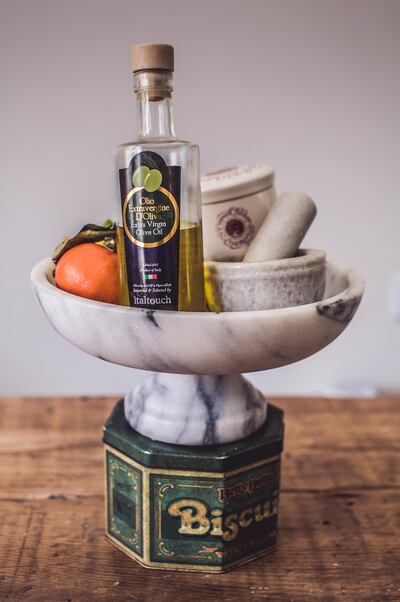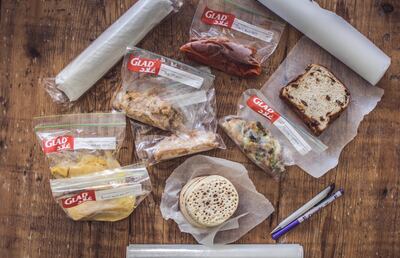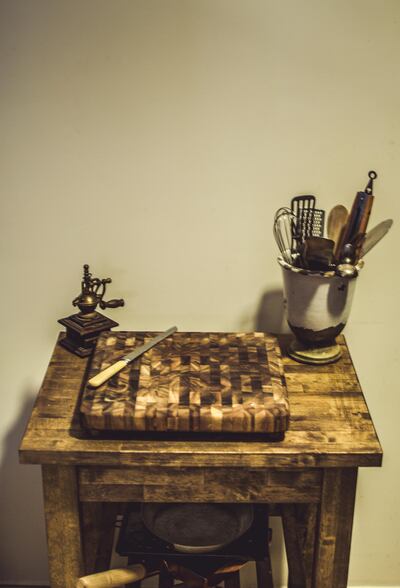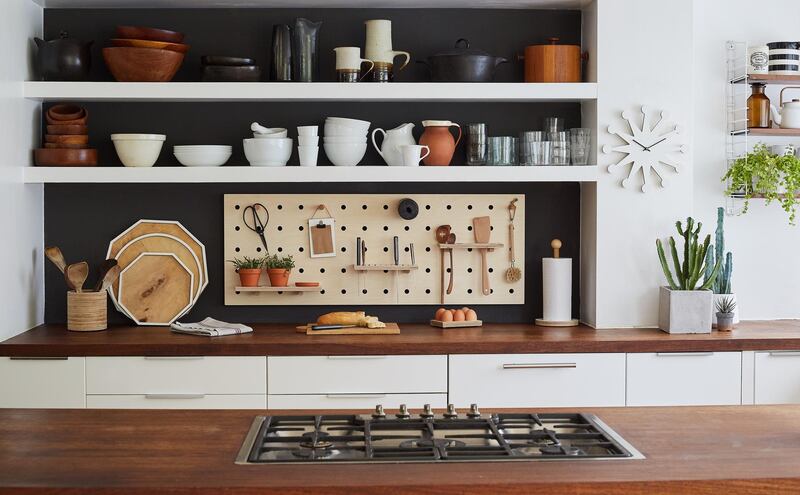Are you a convert to KonMari (that’s the tidying technique from Japanese organising consultant and decluttering whiz Marie Kondo)? Or do you tend to sway more towards Einstein’s mode of thinking when it comes to tidiness (“If a cluttered desk is a sign of a cluttered mind, of what, then, is an empty desk a sign?”)
Either way, the kitchen is one area of the house where, from a health and safety as well as aesthetic perspective, mess is best kept to a minimum. And yet that is, of course, far easier said than done. This is a room where rubbish accumulates fast, and disorder is only a trip to the supermarket or a hastily thrown together meal away.
Although the rental kitchens that many of us occupy in the UAE might not be representative of our dream interiors (be that sleek and shiny modernism or open-plan farmhouse-style), that doesn’t mean we can’t – and indeed shouldn’t – seek to maximise return, in terms of both look and functionality. From mindful habits to expert ideas, the tips that follow will help you to do just that, and should also save you time and money, without demanding that you go full minimalist – although if that’s your bag, there’s absolutely nothing wrong with that.
Build up
Even if your kitchen errs on the side of poky, you can still create additional space by building up rather than out; for reference, think along the lines of skyscrapers constructed in tight city spots. Group together common items such as cookbooks, utensils, cups and crockery, and artfully stack them up, rather than spreading them out, and you’ll instantly see a saving on surface area.
Make further use of vertical space by adding risers to your cabinets, and collating your most-used items (coffee, tea, spices, olive oil, salt and pepper) and displaying them in tiered layers – on a cake stand, for example.

Get hanging
The best-looking bits and pieces in your kitchen should be the ones on show, which means that pretty pots, pans, plates and platters trump half-empty bags of flour and cereal boxes every time. Create a hanging display out of these items and you’ll instantly free up your cupboards for the less good-looking bits. This can, of course, be as elaborate or budget-friendly as you like. From picture hooks that will happily hold lighter utensils, to oversized peg boards and custom-created racks built to fit the dimensions of a kitchen island, the space-generating end goal is the same.
Along the same lines, you could also suspend an overhead rail in an otherwise unused space (along the length of a window, say, or above the oven), and dangle cups or glasses from it. Purchase a hanging basket for storing room-temperature fruit and veg, and put up a magnetic strip for holding your knives.
Declutter your freezer
If you’re not exactly sure what’s in your freezer, but have a sneaking suspicion that foragers could well find a too-icy-to-eat tub of ice cream, along with a number of half-empty Tupperware boxes, you’re not alone. Spend half an hour installing a little order by way of a few reusable freezer food bags and a permanent marker, and you’ll quickly reap the organisational rewards, free up premium space in the fridge or kitchen cupboards, and save yourself a few dirhams.

Begin your freezer overhaul with a thorough defrost and get rid of anything that’s unidentifiable or past its best. Wrap and stash items such as chicken breasts and fish fillets individually, rather than keeping them in their cumbersome polystyrene trays, and apply the same principal to bread: instead of freezing the loaf whole, separate into easy-to-defrost three or four-slice bundles and slot them into gaps in the freezer, Jenga-style.
Store soups, stews and sauces flat in ziplock bags, rather than plastic containers, to reduce bulk, and get into the habit of labelling them with the contents and date that you made them. When you add those flat-packed items to the freezer, do so with the label facing outwards and employ something of a filing system, working from front to back, so that you’ll see the oldest items in the freezer first and be encouraged to use them.
Get rid of the extras
Shelina Jokhiya, founder of DeCluttr Me, a professional home and office organising service in the UAE, is unsurprisingly passionate about the subject of clutter (and, more specifically, getting rid of it). "My ethos is that you should be able to find everything in your home and office within five seconds," she says. "If you don't, you need to declutter and create a system that allows you to locate what you need, faster." Jokhiya explains that in her experience, the most common clutter offenders in kitchens are niche gadgets, such as milk frothers, unnecessary duplicate utensils (multiple peelers and can openers, for example), and dry stores such as flour and spices that are past their use-by date.
In order to keep things under control, she recommends giving the contents of every single kitchen cupboard and storage spot a full review every three months, and stresses the need to self-monitor. “Every time you open your cupboards give them a quick once-over and if you see something you don’t like or use, put it in a recycling bag,” she instructs. “Once that bag is full, take it to a donation bin or recycling centre. The same method applies to clothes or any other items in your home.”
Resist the urge to buy more
Of course, the simplest solution to not having a kitchen full of kit is to resist mindlessly purchasing the items in the first place. Jokhiya highlights the importance of showing a little restraint when it comes to shopping: “Don’t just buy that gadget you saw on TV or at Ikea, think about whether you really need it. If a friend has it, test it out first,” she advises.
“Be sensible: if you don’t cook often, there’s no need for your kitchen to be stocked with 10 different saucepans, and if you have limited space, forgo the 24-piece crockery and cutlery set.” Similarly, if you do acquire something new or opt for an upgrade, make a point of donating or gifting the old piece of equipment; as Jokhiya observes, you simply don’t need two toasters.
Display your wares
While the advice above rings true, there is one item that might be worth purchasing in your quest to streamline: a slim, lightweight trolley or rolling cart that can be moved about the room with ease. Think of the display cart as a mini kitchen, which houses the ingredients, utensils and serve-ware that you use most often, and ensures that they’re always easily accessible. Select a sturdy one with a flat top, so that you can also keep a chopping board there and use the surface as additional prep space. The moveable element is essential here – you want the flexibility to be able to shift it around with you as you work and also to stash it away somewhere else.

Make steady progress
“Tidy as you go” is the mantra that will serve you well on the road to true kitchen zen. Adopt this system, implore anyone who shares your kitchen to do the same and deploy it across all areas: wash dishes or put them in the dishwasher immediately, rather than stacking them up for later; sort the recycling as and when it appears rather than letting it accumulate; and return appliances to cupboards as soon as you’ve finished using them. These incremental actions, coupled with frequent wiping-down of surfaces and quick bits of sorting throughout the day will really make a difference to the look and feel of the place.
Burst or blitz cleaning is another tactic for maintaining overall order. Spend a high-energy 15 to 20 minutes attacking a specific area of the kitchen – the junk drawer that threatens to overflow, for example. Focus on that, and only that, and you'll be surprised by how much you can achieve in such a short time frame.






